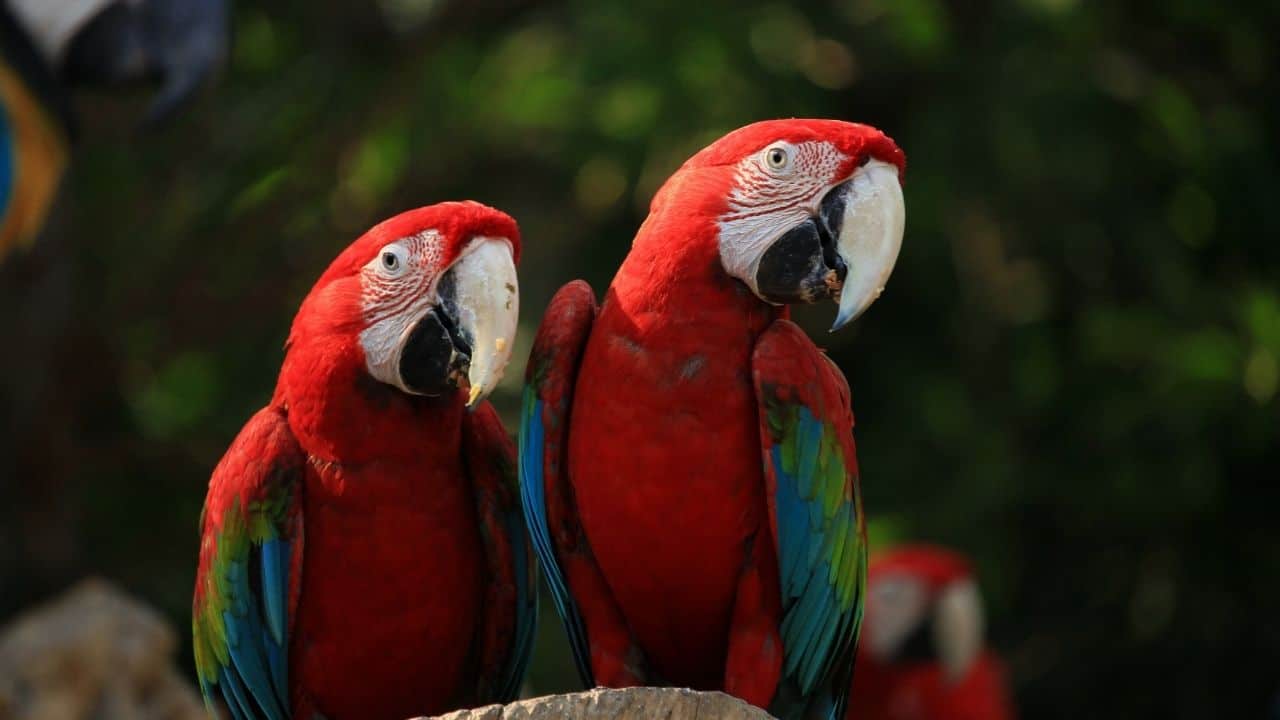The cockatiel, or Nymphicus hollandicus, is one of the most popular pet birds in the world, and with good reason. They are easy to care for and have plenty of personalities to spare!
If you’ve ever had any interest in owning a cockatiel, this article is designed to tell you all you need to know about them as pets, including how they should be kept, how much Cockatiel bird price in India, what you need to provide your cockatiel and more.
Cockatiel Bird Price In India
The price of a cockatiel bird in India can vary widely depending on factors such as the bird’s age, color mutation, location, and breeder. On average, Cockatiel bird price in India ranges from Rs 2,000 to Rs 30,000.
Cockatiel Prices In Different Locations
| Different Locations | Prices |
| Cockatiel bird price in kerala | Rs 2,500 to Rs 85,000 |
| Cockatiel bird price in mumbai | Rs 3,000 to Rs 90,000 |
| Cockatiel bird price in pune | Rs 2,000 to Rs 85,000 |
| Cockatiel bird price in hyderabad | Rs 2,500 to Rs 90,000 |
| Cockatiel bird price in delhi | Rs 2,500 to Rs 90,000 |
| Cockatiel bird price in Kolkata | Rs 3,000 to Rs 90,000 |
| Cockatiel bird price in Bangalore | Rs 3,500 to Rs 90,000 |
| Cockatiel bird price in Tamilnadu | Rs 2,500 to Rs 90,000 |
| Cockatiel bird price in Coimbatore | Rs 2,500 to Rs 90,000 |
5 Factors That Affects The Price Of Cockatiel Bird
There are many factors that affect the price of a cockatiel, some more important than others. Understanding these factors will help you determine what type of bird you’re looking for and what you should expect from the purchase.
This guide will cover 5 factors that affect the price of a cockatiel: Age, Health, Place, Type and Breeder.
1) Age – A bird’s age can be determined by looking at its feathers; they may appear dark or dull if it is older than six months old. If there is any question on how old the bird is, your best bet would be to ask the breeder or seller.They might have documentation that can tell you when the bird was born and also what its parents were. Keep in mind, however, that older birds require more care because their immune systems might not be as strong as younger birds’. The longer a bird lives with an owner, the better chance they have at living long-term
2) Health – Healthy birds tend to look vibrant in color with shiny feathers. Sometimes birds can show signs of illness without showing physical symptoms. For example, a bird who sits in one spot all day could be depressed and lonely. Birds who suffer from depression often don’t interact with their environment, which can lead to health issues like feather plucking.Make sure you take a moment before purchasing your new pet to play with him or her so that you know whether or not he/she interacts well with humans before committing to buying him/her
3) Place – Where the cockatiel comes from will dictate where he/she needs to live long-term. Like people, different areas experience different climates and temperatures. An American cockatiel might need a heated enclosure during the winter time while a European one won’t need anything special. Many breeders will offer this information in their ads
4) Type – Different types of cockatiels have different personalities. Some breeds are more social while others prefer solitude.It is recommended that first-time owners start with a friendly breed such as an African Grey or Budgie to get used to caring for another being before moving onto other less talkative breeds such as Indian Ringnecks or Australian King Parrots
5) Breeder – The breeder determines the personality of the bird and also plays a role in determining how expensive he/she will be. Breeders typically sell their own babies, but sometimes private sellers come across a chick and decide to place him/her up for sale.
Private sellers usually charge less than breeders but come with much higher risk since you never know what kind of condition the bird came from.
About Cockatiel Bird
History of Cockatiels
Cockatiels (Nymphicus hollandicus) are native to Australia and are part of the parrot family. They were first discovered in the late 18th century by European explorers. These birds are believed to have inhabited the arid regions of Australia, including deserts and scrublands.
They were introduced to the pet trade in the 20th century and quickly gained popularity due to their charming appearance, unique crest, and gentle disposition. The first documented breeding of cockatiels in captivity occurred in the 1950s. Over the years, selective breeding has led to various color mutations, making them one of the most beloved and diverse pet bird species globally.
Cockatiel Temperament and Activities
Cockatiels are known for their friendly and affectionate personalities. They are generally social birds that can develop strong bonds with their human companions. While some cockatiels might be a bit shy initially, they tend to warm up to regular interaction and gentle handling. They thrive on attention and enjoy being talked to, whistled at, or even sung to. Their soft, melodious chirps and whistles add a delightful ambiance to a household.
These birds are also quite intelligent and curious. Providing them with a stimulating environment is essential to prevent boredom. Cockatiels are highly trainable and can learn tricks, simple melodies, and even some words with patience and consistent training.
As far as activities are concerned, cockatiels love to explore their surroundings. They enjoy hopping around and climbing on various perches and toys within their cage. Offering a variety of toys that encourage foraging, problem-solving, and physical activity is crucial. Swings, mirrors, ladders, and bells are popular choices. They are also fond of taking baths, whether through a gentle misting or a shallow dish of water. Bathing not only keeps their feathers clean but is also an enjoyable activity for them.
Types Of Cockatiel (Varieties & Color Mutations)
1. Yellow face Cockatiel
Although these cockatiels look a lot the same as the “normal” grey ones above, the yellow patches on their cheeks is different. You may see yellow feathering at the top of their heads. Their bodies should be white and grey with color mutations visible only on their heads.
Yellow face Cockatiel bird price in India can range anywhere between Rs 2,500 – Rs 7,000.
2. Whiteface Cockatiel
These birds have the same grey and white bodies as the Yellowface and Grey (normal), but no color markings on their cheeks. Adult males have white heads with gray markings, but sometimes they are grey. The face of females is usually completely grey.
White Faced Cockatiel bird price in India can range anywhere between Rs 2,000 – Rs 5,000.
3. Gray Cockatiel
Gray cockatiels can be considered normal parrots since they don’t have any mutations in their pigment genes. Their bodies are gray with white markings on the wings and tails. Their cheeks often have orange spots. When fully grown, female adults have yellow spots on their heads. Males develop totally yellow heads. This is the most common color of cockatiels.
Gray Cockatiel bird price in India can range anywhere between Rs 1,500 – Rs 8,000.
4. Blue Cockatiel
Blue Cockatiels have white bodies, but blue wing markings on their tails and black wings. They don’t have colored cheeks and typically don’t display yellow coloring on their heads like other cockatiel varieties. They are one of the most rare cockatiels in captivity.
Blue Cockatiel bird price in India can range anywhere between Rs 1,500 – Rs 8,000.
5. Silver Cockatiel
Multiple mutations in the pigment gene of these cockatiels can affect their original gray color. These mutations cause their grey feathers to look silvery. Some white marks can be found on their tail and wing feathers. Their cheeks are yellow or orange, and their head feathers take on a yellow hue.
Silver Cockatiel bird price in India can range anywhere between Rs 1,500 – Rs 7,000.
6. Lutino Cockatiel
The Lutino cockatiel does not produce melanin, so it produces no grey color. Their bodies are usually all white but they can sometimes have light yellow wings. Their cheeks are bright orange and their eyes are red. They have a yellowish hue to their faces.
Lutino Cockatiel bird price in India can range anywhere between Rs 3,000 to Rs. 8,000.
7. Pied Cockatiel
These white spots are a result of a lack of pigmentation. These white patches are able to be placed anywhere on the body and can take any shape or size. No two Pied cockatiels are ever exactly alike. The Pied cockatiel has yellow top feathers and orange cheeks.
Pied Cockatiel bird price in India can range anywhere between Rs 2,000 to Rs. 8,000.
8. Fallow Cockatiel
The yellowish-brown color of fallow and cinnamon cockatiels is dull or muted. Some grey may be visible on their wings and underside. Their eyes might display a subtle reddish hue and their white heads could display yellow coloring.
Fallow Cockatiel bird price in India can range anywhere between Rs 1,500 to Rs. 7,500.
9. Pearl Cockatiel
The unique characteristic of pearl cockatiels is their distinctive pattern of spots on their heads, wings and bodies. These spots are called pearls and hence their name. Pearl spots are usually white. These cockatiels have orange cheeks, and can sometimes display light yellow coloring on their faces.
Pearl Cockatiel bird price in India can range anywhere between Rs 1,300 to Rs. 8,500.
Cockatiel Health Issues
Respiratory Problems: Cockatiels are susceptible to respiratory issues like pneumonia and sinus infections, often caused by drafts, poor ventilation, or exposure to smoke and fumes. Signs include labored breathing, nasal discharge, and wheezing.
Psittacine Beak and Feather Disease (PBFD): This viral disease affects the feathers, beak, and immune system. Feather loss, beak deformities, and immune suppression are common symptoms. There’s no cure, so prevention is crucial through quarantine and testing before introducing new birds.
Giardia Infection: Cockatiels can contract Giardia, a parasitic infection causing digestive problems. Symptoms include diarrhea, weight loss, and lethargy. Regular cleaning of food and water containers is essential to prevent its spread.
Avian Polyomavirus: This virus primarily affects young birds, causing feather abnormalities, stunted growth, and even death. Vaccination of breeding pairs and proper hygiene can reduce the risk.
Egg-Binding: Female cockatiels may experience difficulty laying eggs, which can be life-threatening. Symptoms include lethargy, fluffed appearance, and straining. Providing a calcium-rich diet and ensuring a calm environment can help prevent egg-binding.
Cockatiel Care Tips
Nutrition: Offer a balanced diet of pellets, seeds, fresh vegetables, and occasional fruits. Avoid excessive fatty seeds. Calcium supplements are essential for females and breeding pairs.
Cage Setup: Provide a spacious cage with horizontal bars for climbing. Include perches of varying diameters to exercise their feet. Place toys for mental stimulation and rotate them regularly.
Social Interaction: Cockatiels are social birds; spend quality time interacting with them daily. Lack of socialization can lead to behavioral issues and loneliness.
Grooming: Regularly trim your cockatiel’s nails and wings to prevent injury and aid in flight control. Mist them with water occasionally to encourage preening and maintain feather health.
Veterinary Care: Schedule regular check-ups with an avian veterinarian. Early detection of health issues is crucial. Quarantine new birds before introducing them to prevent disease transmission.
Facts about Cockatiel
* Cockatiels are smart birds and can learn up to 100 words of human speech.
* Cockatiels do best when they are kept indoors because there’s less danger of them escaping, being attacked by predators, and coming into contact with diseases that could make your bird sick.
* Although wild cockatiels usually stay within an area of 12 square miles (4 sq km), pet cockatiels who spend all day inside an enclosed cage can cover distances as great as 16 miles (10 km) per day!
* Cockatiels should not be given seeds from plants such as corn, grapes, beans, potatoes, and strawberries. Seeds from these plants may cause serious problems like kidney failure. To avoid this risk, use a diet consisting only of rice cereal mixed with fresh fruit and vegetables cut into small pieces for your pet bird.
* Like most birds cockatiels need water daily so make sure to keep fresh water available at all times in both food dishes and water bottles to ensure that they’re getting enough liquids too.
* Just like humans cockatiels love to play with toys and scratch furniture. They also enjoy chewing things so be prepared to find loose threads around their favorite spots and items that were left out.
* Keep in mind that some of the facts you read here are going to vary depending on what type of breed you have since each one has its own unique features. It might take time for you to get familiar with everything your new feathered friend needs but it will be worth it once you understand how much joy he or she brings into your life every day.
Cockatiel Lifespan
The average cockatiel lifespan is 10 -15 years, and they are fairly hardy creatures. However, there are a few things to consider if you want your cockatiel to live the longest life possible.Diet is the most important factor in their health and longevity. A well-balanced diet will ensure that your bird has all of the nutrients it needs.
Frequently Asked Questions
Can cockatiels talk?
Yes, cockatiels are known for their ability to mimic sounds and even some words. However, they are not as proficient at talking as some other parrot species like African greys or Amazon parrots.
How can I teach my cockatiel to whistle or talk?
Repetition and patience are key. Spend time with your cockatiel every day, repeating the sounds or words you want them to learn. Use treats and positive reinforcement when they mimic correctly.
How often should I clean my cockatiel’s cage?
Daily spot cleaning for droppings and leftover food is recommended. A thorough cleaning, including changing bedding and washing toys, should be done at least once a week.
What should I do if my cockatiel stops eating?
Loss of appetite could indicate a health problem. Monitor your bird closely and consult an avian veterinarian if the behavior continues for more than a day.
Can I keep a single cockatiel, or do they need a companion?
Cockatiels are social birds and thrive on interaction. While a single cockatiel can be kept, they might become lonely. Providing regular attention and interaction can help mitigate this.
How do I know if my cockatiel is sick?
Signs of illness include lethargy, fluffed feathers, labored breathing, discharge from eyes or nostrils, changes in droppings, and changes in eating or drinking habits. If you notice any of these, consult a vet experienced in avian care.
What’s the best way to tame a new cockatiel?
Start with a calm environment and spend time near the bird’s cage, speaking softly. Offer treats through the cage bars and gradually introduce your hand for perching. Patience and consistency are key to gaining their trust.
 Lifeyet News Lifeyet News
Lifeyet News Lifeyet News





